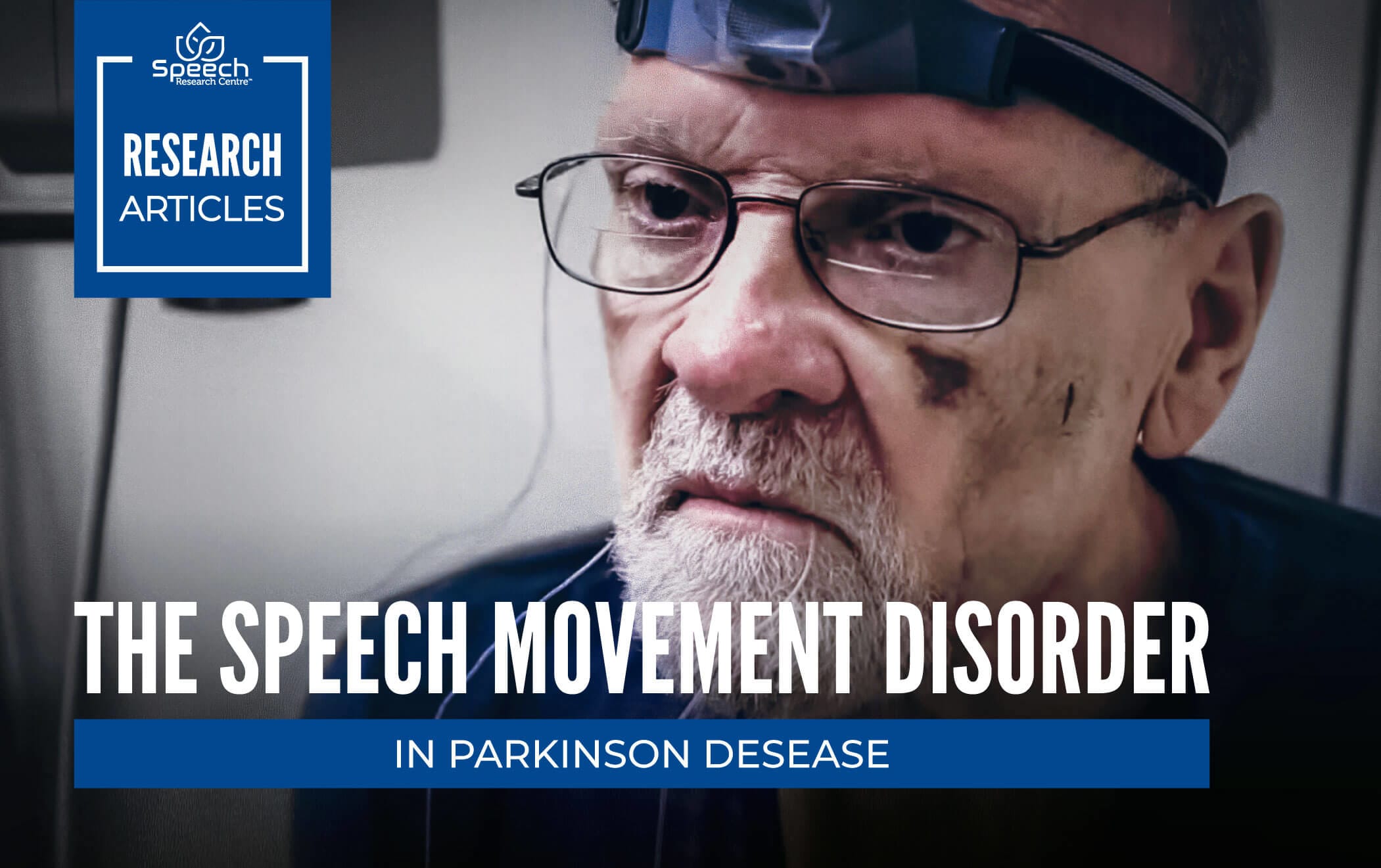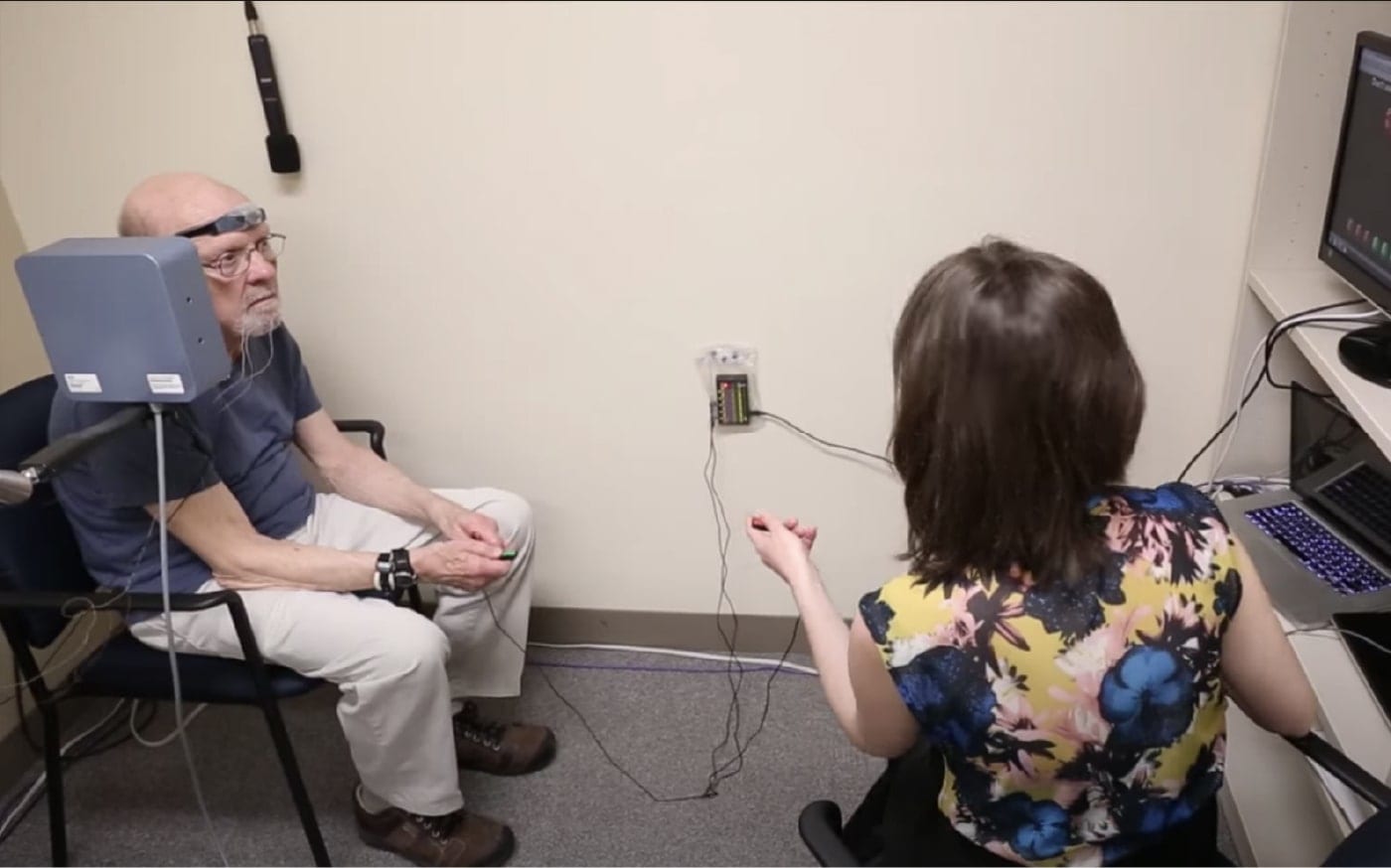
Parkinson’s disease (PD) is a movement disorder that affects not only gross movements but also movements involved in speech production. Over the course of the disease, approximately 90% of individuals with PD develop a motor speech disorder known as hypokinetic dysarthria and many experience difficulties with articulation. In her doctoral work at the University of Toronto (advisor: Dr. Yana Yunusova), Dr. Kearney sought to better characterize the speech movement disorder in PD and use this information to inform the development of a novel speech therapy program.
The first study in this series used electromagnetic articulography – cutting-edge technology that allows tracking of the articulators (e.g., tongue, jaw) during speech. Movements of the tongue and jaw in individuals with PD were compared to those of age-matched peers and in relation to ratings of speech intelligibility. The results showed consistently smaller jaw movements in individuals with PD. In addition, smaller tongue movements were associated with lower ratings of intelligibility. As a result, expanding tongue movement size was targeted in a novel therapy that provided visual biofeedback to participants as they spoke.
The design therapy was further guided by a systematic review of studies using visual feedback for motor rehabilitation in PD. In the review, Dr. Kearney and colleagues identified key elements of such programs associated with better treatment outcomes. For example, treatment success was enhanced when provided in large amounts and at a high intensity, as well as when visual feedback was gamified to make treatment more engaging.
The final study investigated the effects of the novel therapy on tongue movement size and speech intelligibility in five individuals with PD. Tongue movements were visually represented in a game by a dragon breathing fire – the aim of the game was to expand the fire (tongue movements) to burn objects! The results indicated that the therapy was beneficial in training participants to use large speech movements; however, there was no clear effect on speech intelligibility. The optimal tongue movement extent needed to elicit benefits in speech intelligibility requires further study.
This research was featured in the Toronto Star in 2015.
References:
Kearney, E., Giles, R., Haworth, B., Faloutsos, P., Baljko, M., & Yunusova, Y. (2017). Sentence-level movements in Parkinson's disease: Loud, clear, and slow speech. Journal of Speech, Language, and Hearing Research, 60, 3426-3440. https://doi.org/10.1044/2017_JSLHR-S-17-0075
Kearney, E., Haworth, B., Scholl, J., Faloutsos, P., Baljko, M., & Yunusova, Y. (2018). Treating speech-movement hypokinesia in Parkinson’s disease: Does size matter and to what extent? Journal of Speech, Language and, Hearing Research, 61(11), 2703-2721. https://doi.org/10.1044/2018_JSLHR-S-17-0439
Kearney, E., Shellikeri, S., Martino, R., & Yunusova, Y. (2018). Augmented visual feedback-aided interventions in motor rehabilitation in Parkinson’s disease: A systematic review. Disability and Rehabilitation, 41(9), 995-1011. https://doi.org/10.1080/09638288.2017.1419292

